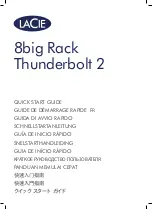
2-20 Riverstone Networks RS 3000 Switch Router Getting Started Guide
Hardware Features
Introduction
The MPLS line card uses the LEDs as described in
GBIC LX (SMF-IR)
•
Single-mode fiber (intermediate range) interface
•
8 or 9 125-mm single-mode fiber cable terminated
with SC connectors
•
Maximum of 10 km of cable
GBIC LH (SMF-LR)
•
Single-mode fiber (long range) interface
•
8 or 9 125-mm single-mode fiber cable terminated
with SC connectors
•
Maximum of 70 km of cable
Table 2-15 MPLS GBIC line card LEDs
LED
Description
Online
When lit, this green LED indicates that the line card is online and is ready to receive, process,
and send packets if configured to do so.
Offline
When lit, this amber LED indicates that the line card is offline (powered off) and is ready for
hot swap.
The Offline LED also is lit briefly during a reboot or reset of the RS and goes out as soon as
the Control Module discovers and properly initializes the line card.
Per-GBIC RX
Green
– indicates when the GBIC’s transceiver receives packets
Amber
– indicates when the GBIC’s transceiver receives flow-control packets
Per-GBIC TX
Green
– indicates when the GBIC’s transceiver transmits packets
Amber
– indicates when the GBIC’s transceiver transmits flow-control packets
Per-GBIC AN
Green
– indicates that the port hardware has auto negotiated the operating mode of the link
between full-duplex and half-duplex.
Orange (intermittent)
– indicates that auto negotiation is in process.
Orange (solid)
– indicates a problem with auto negotiation configuration.
Red
– indicates an auto negotiation failure. This fault may occur if the link partner does not
support full duplex.
Off
– indicates that auto negotiation has been disabled or the link is down.
Table 2-14 GBIC modules media specification (Continued)
















































